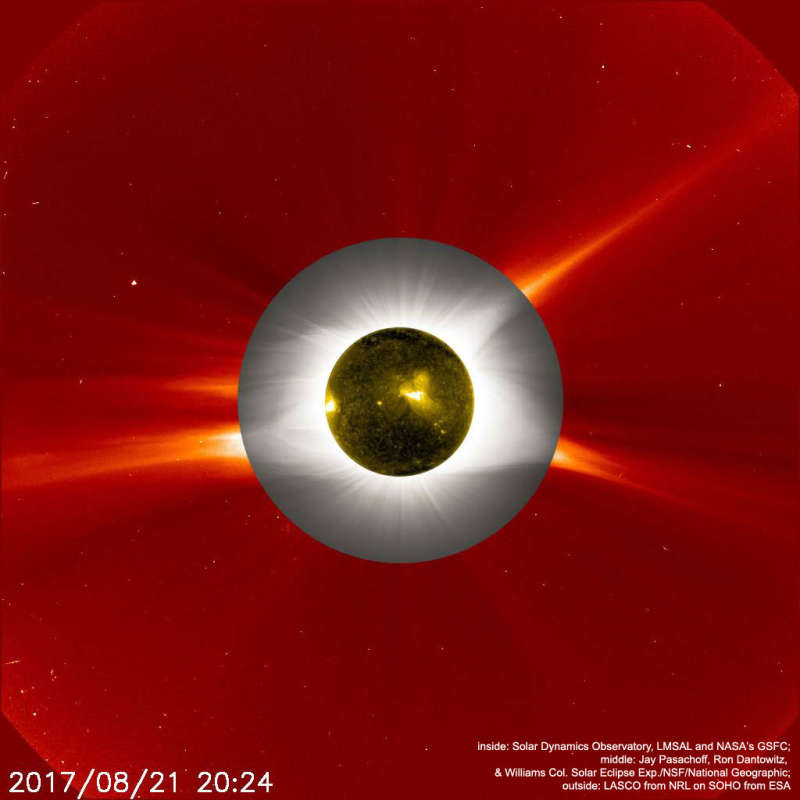Credit & Copyright: Inside: Solar Dynamics Observatory, LMSAL and NASAs GSFC;
Middle: Jay Pasachoff, Ron Dantowitz, and the Williams College Solar Eclipse Expedition/NSF/National Geographic;
Outside: LASCO from NRL on SOHO from ESA
Explanation:
Neither rain, nor snow, nor dark of night can keep a space-based spacecraft
from watching the Sun.
In fact, from its vantage point 1.5 million kilometers
sunward of planet Earth, NASA's
SOlar Heliospheric Observatory
(SOHO) can always
monitor the Sun's outer atmosphere, or
corona.
But only during a total solar
eclipse can Earth-based observers also
see the lovely coronal
streamers and structures - when
the Moon briefly blocks the overwhelmingly
bright solar surface.
Then, it becomes possible to follow detailed
coronal activity all the way down to the Sun's surface.
In the outside layer of this composite image,
SOHO's uninterrupted view of the
solar corona during
last month's eclipse
is shown in orange hues.
The middle, donut-shaped region is
the corona
as recorded by the
Williams College Eclipse Expedition to
Salem, Oregon.
Simultaneously, the inner view is from NASA's Earth-orbiting
Solar Dynamics Observatory, which, being
outside
of totality,
was able to image the face of the Sun in extreme
ultraviolet light,
shown in gold.
Middle: Jay Pasachoff, Ron Dantowitz, and the Williams College Solar Eclipse Expedition/NSF/National Geographic;
Outside: LASCO from NRL on SOHO from ESA
1999 2000 2001 2002 2003 2004 2005 2006 2007 2008 2009 2010 2011 2012 2013 2014 2015 2016 2017 2018 2019 2020 2021 2022 2023 2024 2025 |
Yanvar' Fevral' Mart Aprel' Mai Iyun' Iyul' Avgust Sentyabr' Oktyabr' Noyabr' Dekabr' |
NASA Web Site Statements, Warnings, and Disclaimers
NASA Official: Jay Norris. Specific rights apply.
A service of: LHEA at NASA / GSFC
& Michigan Tech. U.
|
Publikacii s klyuchevymi slovami:
total solar eclipse - polnoe solnechnoe zatmenie
Publikacii so slovami: total solar eclipse - polnoe solnechnoe zatmenie | |
Sm. takzhe:
Vse publikacii na tu zhe temu >> | |
